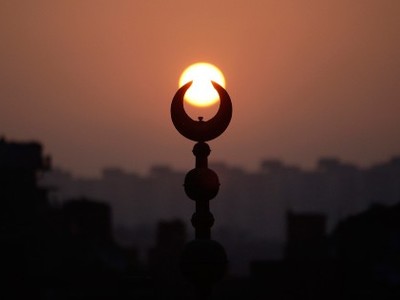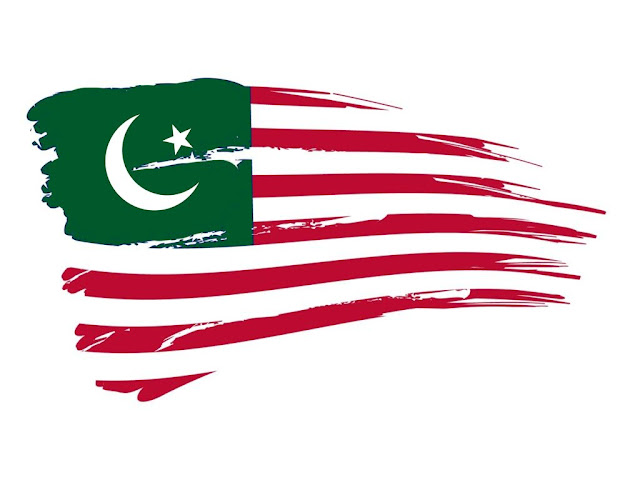Culture and religion, no matter how universal we may want to view the latter’s principles, are inexorably tied. Islam strives to be a religion sans culture, stressing its universality. Due to its founding in the Arabian peninsula, it makes sense that Islamic practice is fundamentally mixed up with tied to the cultures of the Arab world.
But that has not prevented the religion from being adopted in unique ways by non-Arab Muslims around the world. In fact, less than 20% of the world’s Muslims hail from the Middle East. Nigerian Islam and Bangladeshi Islam may share the same underlying principles but their expressions will be different because culture cannot be subsumed under religion.
| Region | Population | Percent of total regional population | Percent of world Muslim population |
| South & Southeast Asia | 1,005,507,000 | 24.8 | 62.1 |
| Middle East-North Africa | 321,869,000 | 91.2 | 19.9 |
| Sub-Saharan Africa | 242,544,000 | 29.6 | 15 |
| Europe | 44,138,000 | 6 | 2.7 |
| Americas | 5,256,000 | 0.6 | 0.3 |
| World Total | 1,619,314,000 | 23.4 | 100 |
(Source: Wikipedia – Islam by Country/Region)
It stands to reason that American Islam should also have its own character. I’ve written before about the need to find a new way to educate Muslims, that is not so reductive. Richard Mouw, writing in First Things, touches upon a separate complaint that others have brought up:
I read recently that some young Muslims in the United States are complaining that what goes on in their mosques is not “American” enough. They say that the patterns of worship and religious education seem designed to preserve the connections to the countries from which their Muslim communities emigrated, while these young folks want their faith to guide them in their lives in America. Shouldn’t their leaders be doing more, they ask, to help them understand how their faith applies to the country of which they are now citizens?
(H/T as always to Rod Dreher for linking to Mouw’s article).
To the extent that the religion can be prevented from being “absorbed by the Moralistic Therapeutic Deist Borg of American individualism and hedonism” (Dreher), this is a worthwhile cause and only ensures that Islam will flourish here. Religion, like any other tradition, lives when people can capture its fire and add new glories to it.
In a polity as diverse as that of America’s Muslims, this process of adaptation is an especially difficult task. Religious education is an inherently backwards-looking endeavor. Learn history, learn the practices and traditions. Learn whose history, learn whose practices and traditions?
 I grew up in a Mosque with mostly South Asians and a few Middle Easterners. My teachers were a Syrian woman, an Indian Shi’a man and a few Pakistani’s as well as my parents’ own instruction at home, influenced by their upbringing in Bangladesh and years lived in Nigeria and Libya, among others. Because of this diversity, we were taught the most common stories and applications of the faith. I give full marks to my teachers for trying their best to split the differences in application. I never really thought anything different of one who wore a hijab all the time vs those who put on a scarf solely for prayer, those who folded their arms vs those who let them fall straight.
I grew up in a Mosque with mostly South Asians and a few Middle Easterners. My teachers were a Syrian woman, an Indian Shi’a man and a few Pakistani’s as well as my parents’ own instruction at home, influenced by their upbringing in Bangladesh and years lived in Nigeria and Libya, among others. Because of this diversity, we were taught the most common stories and applications of the faith. I give full marks to my teachers for trying their best to split the differences in application. I never really thought anything different of one who wore a hijab all the time vs those who put on a scarf solely for prayer, those who folded their arms vs those who let them fall straight.
But it’s also true that not everyone will receive the same type of education I did. There are those who will have been raised more deeply within the religio-cultural traditions of their parents’ homelands. Our pasts necessarily inform our present and vision for the future. If it is difficult to build around education, beyond the Five Pillars, then how are we to find forward-looking answers to how our faith applies to the USA or other countries which have diverse Muslim immigrant populations.




